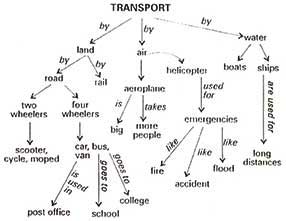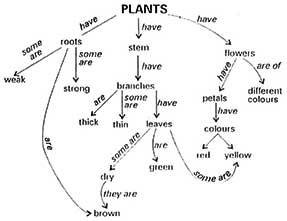Basic Information
Sometimes learning becomes easier when you look at a concept as a whole and realize the relationship of the parts with the whole. Here's how you can bring concept mapping into the classroom.
Duration:
00 hours 45 mins
Introduction:
Most teaching and learning in a classroom takes place through definition and rote. These are perhaps the greatest deterrents to real learning. Alternatively, learning through themes could prove to be beneficial. For this, concept mapping is one effective strategy. Teacher Plus suggests this technique for teachers to help students recognize new relationships between concepts, thereby also discover new meanings.
In an active learning process there is emphasis on building skills and exploring attitudes. This has implications for how we teach. For this, we cannot rely on transmission models of learning. We need to create opportunities for discussion, for sharing ideas, for working together in small groups, in order to make children think. Themes are organized around contents of curriculum, children learn about different topics but the information is forgotten within weeks. For effective learning to take place, themes could be planned around one or more concepts. Themes could also be used as a means to build skills in various aspects of the curriculum.
Concepts are tools which children can use to organize their own understanding of the world. Primary themes tend to be organized around areas of content such as people at work, transport, and communication. Themes can also be developed around the idea of building children’s understanding of abstract concepts like changes and images. While planning a theme work, it should be kept in mind that children come to the class with their own experiences.
Objective:
Concept maps present ways to visualize concepts and hierarchical relation between them. Thus, they are powerful tools for observing the nuances of meaning a student holds for concepts embedded in his or her map. When concepts are conscientiously constructed, they reveal the cognitive organization in the student.
Activity Steps:

In planning a theme, four aspects have to be considered.
1. What are our general assumptions about theme work?
2. Why have we chosen this theme?
3. What do we want the children to gain from this theme?
4. What resources and methods are we going to use?
To plan a theme around a concept, one could use the concept mapping approach. Concept mapping is a technique for externalizing concepts and propositions, thereby recognizing new relationships and new meanings. For teachers, it determines definite pathways for organizing meanings and for negotiating meanings with students as well as to correct their misconceptions. For the learner, it helps to make evident the key concepts and propositions to be learnt, suggests linkages between the new knowledge and what he or she already knows. Moreover, this technique can be used with students from primary school to college with varying degrees of difficulty level.
A. Preparation
- Ask children to name a few familiar words. Use object words at first like dog, cat, grass. Write them on the board.
- Ask for action words such as skipping, sowing, and sewing. Write them on the board.
- Give unfamiliar words and ask whether they see a picture in their mind.
- Write words like is, they, then, are, and make the children understand they are not concepts (which have meanings) but are linking words, which join two concepts, statements, or events.
- Show the linkage – Sky is blue. Make them construct sentences using concept words and linking words.
B. Concept mapping
Tell the students that you are going to play a word game called concept mapping.
- Take a broad theme, say plants.
- Ask the children to name familiar and related concept words.
- Organize the list of words, from more general to more specific concepts. For example, plant, stem, root, leaves, flowers, petals, green, red, water, soil, dirty, etc.
- Based on the list make the children form short sentences. Make a map on the board.
- Ask if anyone can try and relate the concepts by connecting words.
- See if anyone can suggest a cross-link between one concept and another on the map.
- Have the children copy the concept map and ask if they could relate more words on their own.
C. Follow-up activities
- Group the children and ask them to make a collage of pictures related to the theme.
- Ask them to write a story using the words in the map.
- Make the children extract words from the textbook on a topic and map it.
D. Implications
Concept mapping can be used as an evaluation tool where one can know whether the student has understood the concepts resulting in progress in learning and whether two or more concepts are interrelated in a new propositional meaning.
Extend the activity to different areas of curricular content and make the children play the game in groups. Display the concept map on the blackboard.
Tips
- The best way to help students learn meaningfully is to help them see the nature and role of concepts, their relationship as they exist in the students’ minds, and as they exist outside.
- Help them extract specific concepts from the spoken and written material and identify the relationship among the concepts.


No comments:
Post a Comment